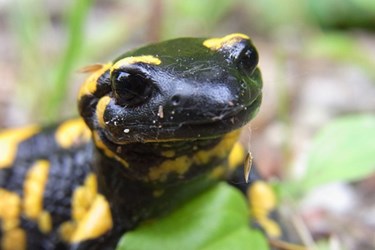Could Salamander Skin Help Regrow Human Limbs?
By Chuck Seegert, Ph.D.

If a lizard’s tail gets pulled off, a new one grows back. Cut a worm in half and both halves will regenerate, leaving you with two full worms. This ability is absent in humans, though it has been long sought after. Now research from a team in China may bring it a step closer to reality.
Many animals on the lower limbs of the evolutionary tree are capable of extreme feats of regeneration, often growing whole limbs and large body parts back after they have been removed. The salamander is one of these animals, and research into the mechanisms that they use to achieve this regrowth may have application in other animals — and even humans.
"This research takes a step toward an understanding of the cellular and molecular events that underlie quick wound healing in the salamander by the discovery of a potential wound healing promoting peptide," Ren Lai, Ph.D., a researcher involved in the work from the Kunming Institute of Zoology at the Chinese Academy of Sciences in Yunnan, China, said in a recent press release.
The peptide is named tylotoin, and it was identified from the skin of a salamander species called Tylototriton verrucosus, according to a recent study published in The FASEB Journal. Running the new peptide through keratinocyte cell proliferation assays and endothelial cell tube formation assays, it became apparent that the peptide showed a similar efficacy to epidermal growth factor (EGF), an important bioactive molecule in mammalian wound healing.
Given the results of these bench top studies, the researchers decided to take things to the next level and test it in a mouse model. Results from the study showed that Tylotoin enhanced the proliferation of keratinocytes, vascular endothelial cells, and fibroblasts, which are all key cell types involved in wound healing. The effects exerted on these cells led to increased rates of granulation tissue formation and reepithelialization, while also promoting key wound healing cytokines like transforming growth factor beta1 and interleukin 6.
"Until now, rapid wound healing has been the stuff of superheroes and science fiction," said Gerald Weissmann, M.D., editor-in-chief of The FASEB Journal, in the press release. "Scientists have always wondered how some 'lower' animals heal wounds that would be mortal to humans. Now, we are taking concrete steps to mimic this ancient — and forgotten — healing process in our own bodies."
Wound healing in humans is an active area of research, especially in the area of burns, which can involve large portions of the body. Recently, a new nanogel has also shown promise in promoting wound healing and may help in this challenging clinical scenario.
